So, you want to take a walk on the wild side and delve into the world of feathered folklore? You’ve come to the right place.
Welcome, aspiring Raven Encouragers! This guide is specially crafted for those extraordinary individuals, who, rather than admiring the more conventional assortment of backyard birds like robins or sparrows, have a peculiar passion for the flippin’ fantastic, the Shakespearean-approved, and the oft misunderstood – the Ravens.
If ‘How to Attract Ravens to Your Yard’ has been your latest tab-au-naturel, you’re in for a treat. Strap yourself in, and prepare to unravel your potential as a top-tier raven magnet. Spoiler: There will be no shiny objects shown!
Bonding with the Ravens: A Fascinating Journey of Backyard Birding
![How to Attract Ravens to Your Yard: The [Complete] Guide to Attracting these Beautiful Birds to your Backyard 1 Ways to attract Ravens to your Yard](https://ekz2dfuukk8.exactdn.com/storage/2023/10/ways-to-attract-ravens-to-your-yard-1024x683.jpg?strip=all&lossy=1&ssl=1)
Ravens, known for their distinct intelligence and unique character, are a birdwatcher’s delight.
As part of the Corvidae family, these corvids are notably famous for their confidence and impressive memory.
Captivating the interest of birdwatching buffs, ravens add an extra charm to the backyard birding experience.
However, attracting these famously elusive creatures to your household may require a little more effort than your ordinary birding adventure.
Get ready to embark on a riveting journey of watching, befriending, and learning how to attract ravens, these majestic creatures right in your backyard.
This venture into backyard birdwatching is not just about observing, but also learning and appreciating the nuances of these impressive corvids.
![How to Attract Ravens to Your Yard: The [Complete] Guide to Attracting these Beautiful Birds to your Backyard 2 How to attract Ravens to your Garden](https://ekz2dfuukk8.exactdn.com/storage/2023/10/how-to-attract-ravens-to-your-garden-1024x851.jpg?strip=all&lossy=1&ssl=1)
Making Your Yard a Raven’s Paradise
Importance of a Quiet and Pet-Free Zone
Among the key factors in knowing how to attract ravens is creating a safe and peaceful environment in your yard.
Predatory pets such as cats and dogs are viewed as threats by these birds, even being considered a nuisance.
The simple presence of these pets in your yard can deter ravens from visiting. For this reason, it’s crucial to keep these pets either indoors or fenced off in a separate area to offer the ravens a relaxed space.
Be mindful that even if your pets are not predatory, their size or unpredictable movements can still unnerve the ravens, potentially becoming an unwelcome nuisance.
Remember, creating a pet-free zone is just the first step; ensuring your yard is quiet and disturbance-free is equally crucial.
![How to Attract Ravens to Your Yard: The [Complete] Guide to Attracting these Beautiful Birds to your Backyard 3 What food attracts Ravens to your yard or garden](https://ekz2dfuukk8.exactdn.com/storage/2023/10/what-food-attract-ravens-to-your-yard-1024x683.jpg?strip=all&lossy=1&ssl=1)
Ravens, like some people trying to relax in their backyard, tend to avoid loud, chaotic environments and prefer serene places to eat and rest.
If you want to attract the ravens love, respecting their need for tranquility will make your yard a favorable destination for these intelligent creatures.
Creating a quiet and pet-free environment is a small price to pay for witnessing these beautiful creatures and will attract them to your yard.
Offsets, Treats & Decoys: Mastering the Art of Attraction
Another effective technique to attract ravens to your yard is using decoys. Ravens are highly social creatures, often forming what’s known as an ‘unkindness of ravens’, which describes their instinctive tendency to flock together.
Utilizing this crowd mentality of these birds, place a couple of decoy ravens around your yard. This kind of setup resembles a rally call for ravens, igniting their curiosity to land and investigate.
Invest in quality decoys for better results. Although general bird shapes might work, detailed crow or raven decoys significantly increase the likelihood of attracting a real-life flock of these birds to your yard.
![How to Attract Ravens to Your Yard: The [Complete] Guide to Attracting these Beautiful Birds to your Backyard 4 How do I attract Ravens to my Yard or Garden](https://ekz2dfuukk8.exactdn.com/storage/2023/10/how-do-I-attract-ravens-to-my-yard-1024x683.jpg?strip=all&lossy=1&ssl=1)
Tuck in some decoy feathers and manage them in natural poses, like they’ve gathered to roost or feast, which resonates with their winter behavior of flocking together for food and shelter. This setup sends out signals of a safe and welcoming environment to the shy yet confident wild ravens.
Adding treats into the mix is a surefire way to catch a raven’s attention. Ravens have a varied diet, including fruits, nuts, seeds, and even scraps of meat.
If you want to attract ravens, work out a variety of treats to make these intelligent and largely misunderstood creatures frequent visitors feeding in your yard.
Remember, ravens remember kindness, and mastering the art of attraction might take patience and consistent efforts.
Place Several Raven Bird Feeders in Your Yard
One of the most effective approaches to attract ravens to your garden is by installing multiple bird feeders.
Much like hawks, renowned as prey birds, ravens also appreciate feeders that are large with ample space to hold substantial amounts of food, and are easy to open and refill.
Start by placing a few closely packed feeders to make the visiting ravens feel more comfortable.
Gradually, as they become accustomed to returning to your yard, you may redistribute the feeders, contributing actively to raven conservation within the urban environment.
Ravens prefer open spaces with clear lines of sight, so locate the feeders in an unobstructed area where the birds can easily spot them.
Among the different styles of bird feeders available, each is designed to attract a particular species of bird. Ravens, being larger than most birds and often foraging on the ground, would appreciate if you added food directly on the ground.
Alternatively, you may opt for a ‘platform-style’ feeder. If choosing the latter, ensure the platform is sufficiently large for an average raven and is positioned high with a clear view for them, as these prey birds are always vigilant in flight.
Large, robust feeders that are installed correctly play an indispensable role in attracting ravens to your yard, conveying safety and plentiful resources, much like effective conservation practices should.
Creating a Perfect Feeding Routine
Fill the Feeders with Right Food: Know What Ravens Eat
Ravens are noted for their diverse diet. Not surprisingly, they do not shy away from a kernel of popcorn or two in their feast, in addition to insects, berries, garbage, and even prey such as rabbits.
Ravens are opportunistic omnivores, ravens are also wonderfully adept at exploiting any available food sources.
However, ravens are very smart, and luring them into your yard calls for a strategy, blending the right foods with preparedness.
Ravens, notorious yet smart birds, have a particular liking for unsalted peanuts, corn, sunflower seeds, and cracked corn.
They’re also fond of meat products, from chunks of shredded beef or chicken liver to the occasional raven kill found in nature.
As surprising as it may sound, they even savor your pet’s food. Like cats food is particularly tempting to them, but if you prefer not to invite raccoons into your yard, it’s wise to refrain from using that.
Remember, it’s crucial to keep their food fresh. Regularly empty out stale food from the feeders and top them up with a fresh supply.
Watch out for signs of spoilage or contamination, as these can potentially lead to a wide array of diseases in these birds.
Catering the right food in appropriate quantities lays a strong foundation for building meaningful bonds with these intriguing creatures.
It’s an enthralling experience to have those confident ravens or songbirds happily enjoying a meal in your backyard.
How Location and Timing Matter for Feeding Ravens
In your quest trying to attract ravens to your backyard, understanding their feeding habits is crucial.
Alongside, you can create a suitable roosting place for them as ravens look for safe places to rest.
Integrate the location of your bird feeders judiciously as it can significantly influence whether or not these avian visitors, including hawks, will pay a visit to your yard.
Remember, much like their raptor counterparts, Ravens are considered larger than most birds and prefer spacious, clear, and open areas.
Strategically positioning the feeders in such a way that they are clearly visible to the ravens in flight, but not exposed makes them feel vulnerable towards potential threats.
Indeed, a safe and accessible feeding spot, complete with peace and quiet, will make your yard a favorite haunt for the ravens and even hawks.
In feeding matters, maintaining consistency is key. To cultivate a pattern, just like Tom Broughton who put out sunflower seeds in spring and attracted a myriad of birds, consider offering food at the same time each day.
This creates a routine that ravens, and possibly hawks, can rely on. It is more than just casually scattering some food and waiting for ravens to appear.
A consistent feeding schedule ingrains a sense of trust, and in time, the ravens will adjust their visits to match this schedule.
Ravens, much like the iconic American Robin, will appreciate a reliable food source that requires little effort.
The allure of easy sustenance will soon have these intelligent creatures regularly gracing your garden, marking it as a customary roosting and feeding spot.
Make Sure to Add Water Sources
Water is as critical to ravens as food. Much like the manner a reed needs moisture to flourish, it not only quenches their thirst but also helps them maintain their hygiene and regulate their body temperature.
They seek water bodies for bathing, a natural process akin to the way a gentle breeze refreshes a hot day, cleaning their plumage and keeping them cool.
Therefore, not only will adding a water source provide a valuable resource that crows need, but it will also make your yard even more inviting to them and become a welcoming oasis in the metaphorical desert.
Consider adding a birdbath or a simple dish of water to your outdoor area. Keep in mind that ravens are larger than your average garden bird, similar in size to the towering reeds besides a pond, so a larger and deeper birdbath would be more suited to their needs.
If you cannot find a suitable birdbath, you can flip a large bucket with water. Regardless of the type of water body you add, it’s important to ensure freshness.
Therefore, make sure to change the water daily to keep it fresh and clean. If possible, locate the water source in a shady but accessible area, where a nice breeze can also bring comfort to them.
Additionally, to make the water source more appealing, you can place shiny objects around your yard, some smooth stones or twigs, reminiscent of a reed’s natural environment, in the dish for the birds to perch.
Adding small pieces of fresh fruit, such as berries, apples, and cherries, can further encourage the ravens to visit.
In those frosty winter days, much like a stiff reed braves the icy winds, make sure to crack the ice on the top to enable them to access the water.
Remember, successfully attracting ravens is not just about food, but it’s about providing all the essential resources they need, in the same breezy manner, we must include the other essentials of life.
Advancing Your Attraction Game
What Do Ravens Like to Collect? The Lure of Shiny Objects
The fascination that ravens have for shiny objects has long been a source of intrigue for avian enthusiasts.
Adorning themselves with pebbles or pieces of metal, the shimmering objects serve as decoration and impress their avian peers.
Much like a flash of light, these captivating objects catch their attention and pique their curiosity. It is believed that they ‘steal’ these shimmering trinkets, adding them to their collections.
According to some online anecdotes, this behavior might be a reflection of the bird’s intelligent, problem-solving nature.
Ravens could be trying to comprehend the shiny objects as if they were enigmatic puzzles waiting to be solved.
You can tap into this characteristic trait of theirs by strategically leaving shiny objects around, such as pieces of broken mirrors, small metallic toys, or even everyday utensils like forks and spoons in your garden.
However, this should be done judiciously. If the ravens construe the objects as significant to you, they might be triggered to ‘steal’ them, considering their notorious kleptomaniac behavior.
Nonetheless, it’s pertinent to emphasize that while this flashy behavior is fascinating, there is still no scientific evidence that confirms ravens have an inherent affinity for shiny things.
They are intelligent creatures, likely drawn to new things out of curiosity more than anything else.
Start a Compost Area: An Organic Way to Attract Ravens
Starting a compost area in your yard not only helps in reducing waste but also serves as an excellent way to attract ravens. Known as scavengers, ravens, similar to certain animals like squirrels, are attracted to compost bins that are rich in organic waste.
Usually, the compost bin should be well-balanced, carrying proper ratios of ‘green’ organic material (like fruit and vegetable scraps) and ‘brown’ material (such as dried leaves or small twigs).
However, to attract ravens, it is suggested that your compost should lean heavier on the green material.
Ensure your compost pile is uncovered and easily accessible akin to a set-out seed that draws in birds, squirrels, raccoons, and the like.
Continually adding scraps of organic materials from your kitchen like leftover fruits, vegetables, and grains will, over time, make your compost pile a veritable banquet hub for the ravens.
A bonus to this, the final compost generated from your kitchen waste serves as an effective, low-cost fertilizer for your plants.
Hence, starting a compost area is beneficial for both your gardening needs and attracting these intelligent birds.
However, it’s crucial to remember not to include meat scraps or leftover food, as they can attract unwanted pests!
Sticking to a compost recipe that draws in the ravens and simultaneously enriches your garden soil would prove most effective.
Be Alert & Respectful
Don’t Try to Get too Close: Decoding the Personal Space of Ravens
Ravens are wary creatures, known for their intelligence and ability to never forget a face.
They are also interesting in the sense that they are able to decode and respond to the distress calls of their peers.
Although they can recognize individual humans and develop trusting relationships over time, an important thing to remember is to respect their personal space.
Resist the urge to immediately approach a raven visiting your garden. Instead, keep your distance and maintain a quiet observation.
This measure also helps to avoid triggering a distress call and will ensure that you don’t startle or scare the birds away.
Should a raven land nearby, avoid direct eye contact as they can interpret this as a threat.
Move slowly and quietly, sharp movements and sudden noises can urge them to fly away.
In fact, the quickest way to build trust with these birds is to teach them that you’re safe to be around. By establishing a consistent feeding routine and providing them with food and water, you can suppress their natural tendency to issue a distress call.
Another fun fact to note is the uncanny “Mirror Behaviour” in ravens and crows. By hanging a mirror in your backyard, you can attract these creatures without invading their space.
However, always remember that these are wild creatures. In unexpected circumstances, even a previously friendly raven can engage in defensive behavior with their familiar crow call.
Therefore, it is always recommended to keep a fair distance and respect their boundaries.
Observing the Behavior: Signs of Fear and Discomfort in Ravens
When it comes to interacting with ravens, it is important to understand their behavior.
Despite the differences, this understanding is similar to being aware of the dietary peculiarities of robins during the winter or recognizing bird sounds that mimic owls but come from other bird species.
The more conscious you are about the signs of fear and discomfort, the more successful you will be in befriending these, and indeed all, birds.
Ravens, much like owls, communicate primarily through vocal sounds and body language. If a raven vocalizes a sudden, loud sound (‘kaa’ or ‘haa’), akin to a startled owl, it may be signaling unease or perceived threat.
Similarly, defensive body postures such as spreading the wings wide, puffing up their feathers, or pecking could also indicate that the bird is threatened.
Like robins responding to winter conditions, if the raven flies away abruptly, screeches loudly, or behaves unusually, it’s a sign that it’s uncomfortable with your presence, indicating you’re too close.
At times like these, it’s vital to retreat and give the bird its space.
Moreover, please remember that if a raven is nesting, it will be particularly defensive.
During nesting, both male and female ravens aggressively safeguard their nests and can attack if they perceive a threat to their eggs or young ones.
Understanding these behaviors and guidelines gives you the opportunity to communicate respect and trustworthiness to these intellectual creatures.
Always keep in mind their reactions towards your actions and adjust your behavior accordingly.
Conclusion
Final Words on Attracting Ravens to Your Yard
Attracting ravens to your yard offers a unique opportunity for close encounters with this marvel of nature.
Known for their intelligence and unmatchable behaviors, ravens can add life to your garden, creating an active and joyful atmosphere.
Creating a raven-oriented environment engages various factors like offering diverse food options, providing fresh water, maintaining a peaceful and secure place for them.
When possible, enriching the habitat by adding captivating decoys and sparkling distractions will help you attract Ravens to your yard.
You should respect ravens’ boundaries, keenly observe their noticeable behaviors, and understand their unique habits.
Always remember, the rapport with ravens should be rooted in trust and respect.
In return, you can enjoy the company, fascination, and charm these extraordinary creatures bring.
Indeed, the grandeur of watching these brilliant birds in action – their flight, landing, feeding, and interaction in your backyard, can provide an immensely rewarding experience.
It’s all about patience, persistence, and understanding that leads to this delightful encounter with the majestic ravens.
FAQ
What Is The Ravens Favorite Food?
Ravens are omnivores, meaning they eat a wide variety of food, anything from berries to small animals. However, meat, particularly their prey, is among their favorite food.
They are known for their ability to scavenge carcasses left by larger predators.
In a backyard setting, they are particularly fond of peanuts, Bird suet (mixed with bird seeds), mixed table scraps, corn, and pet food, especially cat food.
However, if you’re aiming to attract ravens to your yard, do not be surprised when these birds start developing preferences for certain foods.
It is not unusual for different ravens to have different ‘favorite’ foods, and they often express these preferences quite clearly.
Finally, if you’re serving meat leftovers, make sure that the meat is not seasoned or tossed with any sauces.
Seasonings, specifically salt, and spices, can harm these birds as Ravens, are known to favor their prey, and will appreciate unseasoned meat morsels.
How Do I Attract Ravens To My Balcony?
Attracting ravens to a balcony requires a similar approach to enticing them into your yard, albeit on a smaller scale. Here are a few tips:
Install bird feeders: Choose a larger feeder model designed to accommodate bigger birds like ravens that can be hung outside the balcony.
Ensure that the feeder is located in a spot that is visible, accessible to the ravens in flight, and free from wind chimes as they might scare the birds away.
Offer a varied diet: Ravens are omnivores and love a varied diet. Populate your bird feeders with peanuts, mixed bird seeds, and scraps of fruit and vegetables.
While they like meat as well, it might not be the best choice for a balcony setting as it can attract unwanted pests.
Provide water: Just like food, water is crucial to attract ravens. A bird bath that is deep enough for the ravens to dip into is ideal.
However, considering a typical balcony’s size, even a large dish filled with fresh water can serve the purpose.
Try shiny distractions: As noted earlier, many ravens exhibit a fascination with shiny objects. Hang a few small pieces of aluminum foil or glittery ornaments that catch sunlight and sway with the wind.
This might draw the attention of ravens flying by. Ensure to avoid using wind chimes for this purpose as they might scare the ravens away.
Stay patient: Remember, it may take a while before ravens notice your efforts and start hanging out on your balcony. Maintain your efforts consistently and be patient.
As ravens are cautious by nature, it might take some time before they feel comfortable enough to visit your balcony. Don’t forget to regularly maintain the bird feeders and keep the area free from wind chimes.
How to Attract Ravens and Crows to Your Yard?
Attracting Ravens and Crows to your yard can be done by providing food sources like nuts, seeds, and scraps. Make sure to also create a suitable habitat with trees for perching and nesting. Additionally, water sources and avoiding pesticides can further attract these intelligent birds to your yard.
Here are some steps you can take:
Create a Safe Environment: Both ravens and crows need a peaceful area to land, eat, leave their dead prey there if they *do not eat it right away, and rest.
Maintain a quiet and pet-free zone in your yard.
Provide Food and Water: Use large, strong bird feeders in your yard. Feeders filled with a mix of fruits, grains, and nuts can attract these birds.
Also, adding a water source like a birdbath can significantly boost their interest.
Notoriously confident, these corvids not only drink and bathe in these baths but also deposit their excess dead prey there for later.
Install Perches: Ravens and crows prefer places with a good vantage point where they can perch, scan their surroundings, and keep an eye on their prey.
Installing perches and birdhouses can attract these birds and encourage them to spend more time in your yard.
Use Decoys: Using raven or crow decoys can pique these clever birds‘ interest and draw them towards your yard.
Keep a Consistent Feeding Schedule: By providing a regular feeding schedule, these birds will consider your yard as a reliable food source, part of their hunting routes, thus increasing the chance of their visits.
Use Shiny Distractions: Ravens and crows, known for their fascination with shiny objects and intelligence, are often attracted to sparkly items.
In addition to the food and safe environment, the sparkle of a mirror, metallic toy, or a piece of foil can capture their curiosity and draw them in.
Remember that Ravens and Crows are intelligent and curious predators. They can take some time to trust a new environment.
So, be patient and consistent in your efforts.
All your hard work in preparing your yard is most likely to pay off, culminating in the rich, rewarding experience of watching these birds and observing their interactions with their prey up close.
What Attracts Crows the Most?
Food, especially high-protein grub, attracts crows the most. These intelligent corvids are attracted to a variety of gastronomical delights.
Which include not only in-shell peanuts, hard-boiled eggs, insects, and meat scraps, but also to their dead prey which they occasionally leave behind.
Setting these high-protein treats in your yard will pique the interest of crows, signaling a bounty of food options available.
Intrinsically omnivorous, crows also gravitate towards calm and secure environments away from threats and noise where they can peacefully feast on their prey.
Therefore, transforming your garden into a crow-friendly refuge with plenty of tall trees and open spaces would be a successful strategy.
Providing fresh water through a birdbath or a dish is another surefire way to attract crows.
Not only will they drink and bathe in these baths, they will also deposit their excess dead prey there for later.
Lastly, appealing to their notorious confidence and curiosity, shiny items placed conspicuously around your garden could trigger a crow visit.
What Should You Not Feed Crows?
Even though crows are omnivores and known for their broad diet range, there are still some foods that are not ideal for their health and well-being.
These intelligent and notoriously confident birds, often observe their food meticulously before consuming it, especially when it’s their prey.
Avoid feeding them any foods that contain traces of alcohol or caffeine as these substances can be harmful, possibly producing both immediate and long-term detrimental effects.
Dry or uncooked beans are also harmful to birds as they contain a compound that is toxic until cooked.
Spoiled or rotten food, particularly meat, should never be fed to crows.
They are known to leave their dead prey there if they do not eat it right away.
Consuming rotten food can cause serious diseases or even be fatal to these birds.
Processed foods are not beneficial for any animal, including crows which can leave excess dead prey for later.
Consuming high quantities of foods like salted snacks, pastries, cakes, or junk food in general, can result in an unhealthy and unbalanced diet.
Chocolate is another item to avoid, as it contains theobromine, which can be harmful to birds in large amounts.
In short, when considering feeding crows, think of what they would typically consume in their wild setting – minimally processed, fresh, and nutritionally rich food.
Especially the prey they hunt, which indicates their need for fresh and rich sources of nutrients.
Why Does the Raven Get Such a Bad Rap?
The raven’s reputation for being a bad omen or symbol of evil largely stems from cultural symbolism and folklore.
For instance, in various European traditions, this bird is often associated with death and misfortune.
Its black plumage, eerie call, and being carnivorous with a proclivity for carrion all contribute to shaping this sinister persona.
Historically, ravens have been spotted scavenging battlefields or following armies, enhancing their image as harbingers of death.
For example, in French and Danish folklore, the raven was believed to house the souls of wicked priests or to encapsulate an exorcist spirit.
In popular culture, like in the Game of Thrones series, the Three-eyed Raven is portrayed as a mysterious and prophecy-dealing entity, further reinforcing the raven’s dark and ominous image.
Conversely, in other cultures, like those in the East, the raven is held in high regard.
The Greeks saw ravens as messengers from the Gods, and in many Native American cultures, the Raven is a figure of creation and transformation.
Thus, the bad reputation of ravens largely arises from cultural perceptions, myths, and superstitions and has less to do with the actual behaviors and attributes of these incredibly intelligent and social birds.
Why Do Ravens Symbolize Fear and Evil?
Ravens symbolize fear and evil largely due to cultural myths, folklore, and superstitions that have persisted over centuries.
Their black color, large size, and their role as scavengers who typically feed on carrion, fuel such negative symbolism, particularly in Western cultures.
In Europe, they stirred thoughts of war, death, and the occult.
German traditions fed the belief that ravens were the reincarnated souls of those doomed.
Meanwhile, the Danish harbored fears of ravens, considering these birds as forms of exorcist spirits.
Ravens also found their place in pop culture and literature, usually dipped in a negative tinge.
For instance, in Edgar Allan Poe’s The Raven, the bird is a messenger of doom and an emblem of eternal regret.
Contrastingly, not all see the raven in a negative light. In many Eastern and indigenous cultures, the raven takes flight as a positive symbol.
Native American cultures view the raven as a creature of metamorphosis symbolizing change and transformation.

![How to Attract Ravens to Your Yard: The [Complete] Guide to Attracting these Beautiful Birds to your Backyard](https://ekz2dfuukk8.exactdn.com/storage/2023/10/How-to-Attract-Ravens-to-Your-Yard.jpg?strip=all&lossy=1&ssl=1)

![How to Identify Turkey Feathers [Ultimate Guide]](https://ekz2dfuukk8.exactdn.com/storage/2023/03/HOW_TO_IDENTIFY_TURKEY_FEATHERS-793x570.jpg?strip=all&lossy=1&ssl=1)

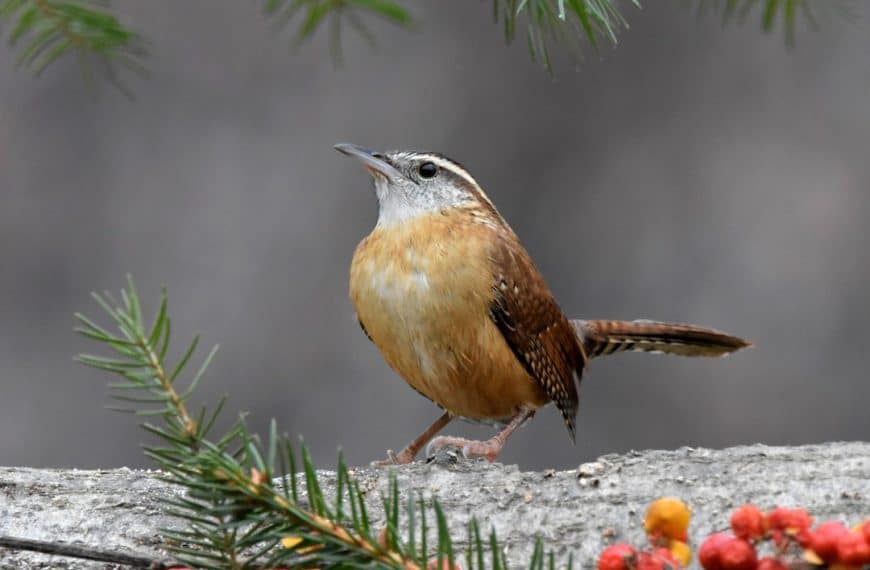
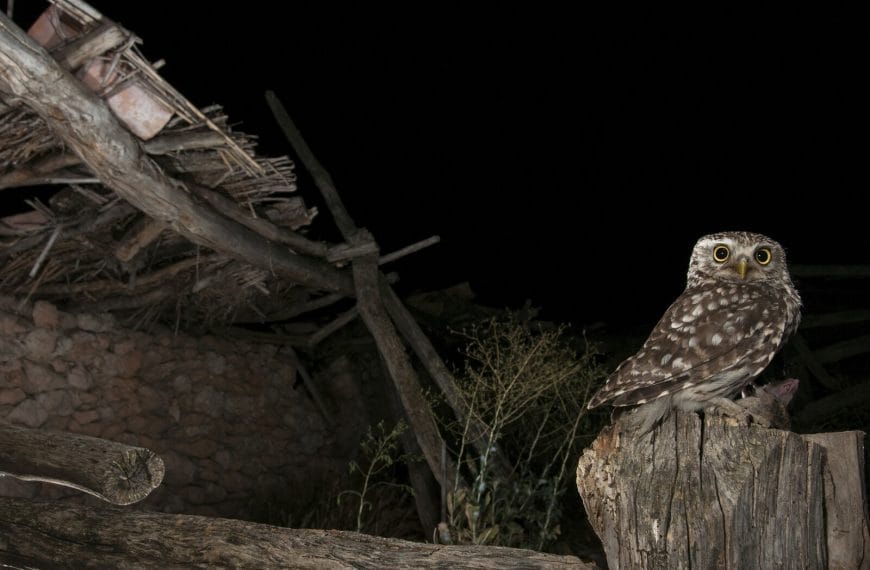




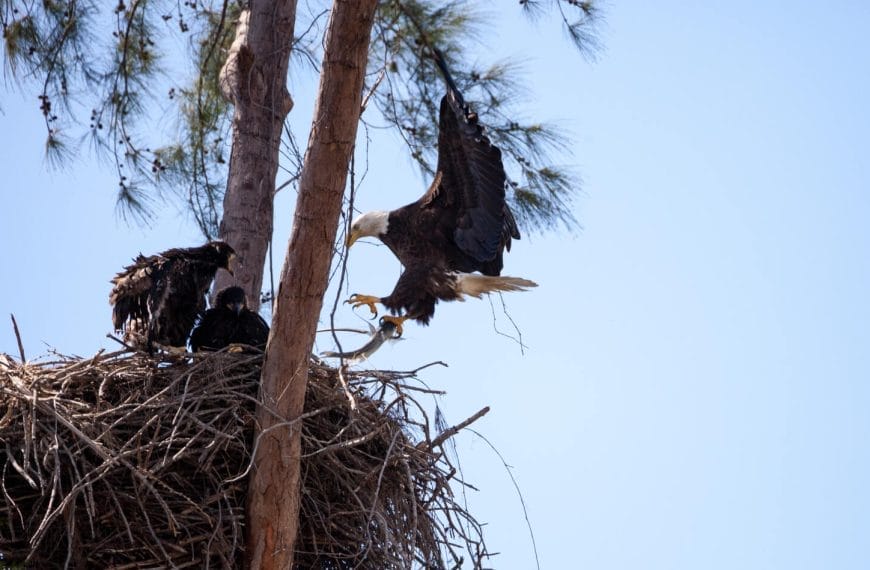
![How to Keep Birds Off Your Boat: Ways and [Best] Deterrents to Keep Birds Away From Your Boat](https://ekz2dfuukk8.exactdn.com/storage/2023/05/how-to-keep-birds-of-your-boat-870x570.jpg?strip=all&lossy=1&ssl=1)

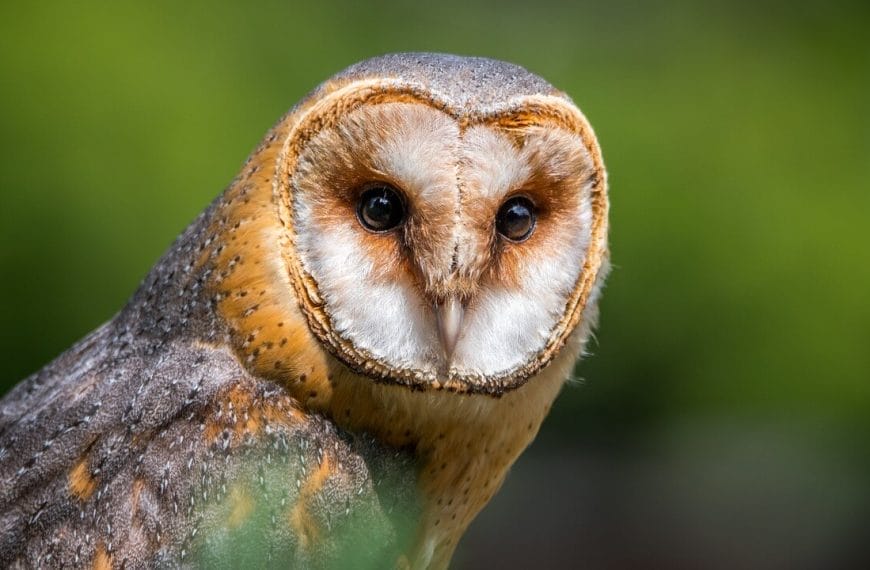
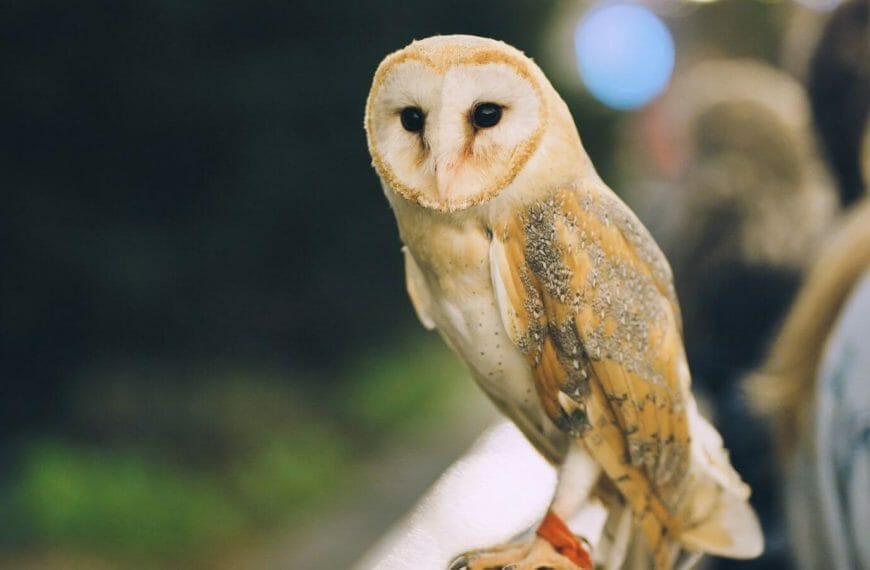













![How to Identify Turkey Feathers [Ultimate Guide]](https://ekz2dfuukk8.exactdn.com/storage/2023/03/HOW_TO_IDENTIFY_TURKEY_FEATHERS.jpg?strip=all&lossy=1&ssl=1)

